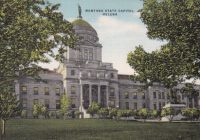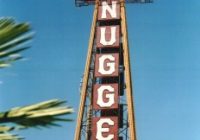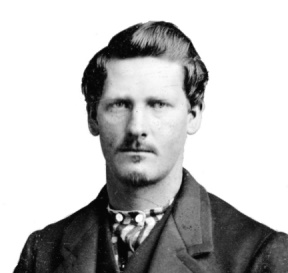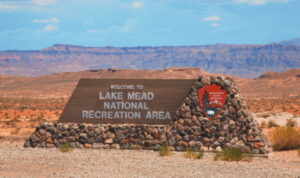|
Listen to this Gambling History blog post here
|
1920s-1930s
Presumably to gain money, power and notoriety, a small clique of men monopolized gambling in Reno, Nevada during the 1920s and 1930s through violence, payoffs, intimidation, threats and other gangster techniques. The industry mostly was illegal, with some games allowed, until 1931.
The syndicate’s modus operandi became the example of how it was done in Nevada, a guide for their mobster friends who, later, would rule gambling in Las Vegas.
Along with games of chance, the Reno Mob offered endless alcohol during Prohibition and sex for sale. The hotbed of vice that was The Biggest Little City, along with a relaxed divorce law, spurred tourism long before Vegas became the state’s largest metropolis and took over as that industry’s leader. Further, with their dollars (and perhaps coercion), the racketeers were instrumental in getting gambling legalized in Nevada.
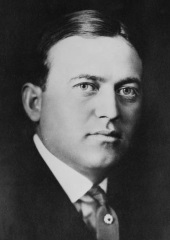
George Wingfield
The Strings Puller
George Wingfield, Sr. (born 1876): The man with the vision (and gobs of money at the time), he initially orchestrated the launch of illegal gambling in Reno, choosing the few men to effect his plan, getting them trained in casino operations and having them run games in town. Wingfield wanted the buildings he owned to be filled and believed the offer of gaming in them would achieve that end. Although he, himself, was a savvy card player, he needed what he believed to be a cleaner image to carry out his other pursuits, such as politics.
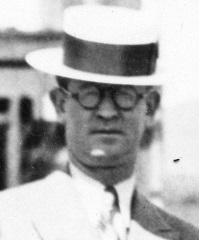
Bill Graham
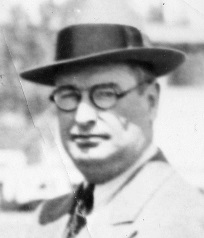
Jim McKay
The Deadly Duo
James “Jim/Cinch” Carmichael McKay (born 1888) and William “Bill/Curly” James Graham (born 1888): After meeting in Tonopah, McKay and Graham became fast friends and crime partners. Wingfield had them learn the gaming business at one of his and Abelman’s casinos, The Big Casino in Tonopah, before he summoned them to Reno in the 1920s to establish illegal gaming there. While maintaining a thin allegiance to Wingfield, the pair quickly plotted their own course, which would, for starters, involve launching their own casino (Willows) and brothel (Stockade).

William Justi
The City Councilman
William A. Justi (born 1873): Justi was the councilman for Reno’s liberal Third Ward, in which most casinos were located, between 1923 and 1944. He also was the council’s police committee chairman for a number of years. In those two roles, he could and did act on behalf of McKay and Graham, who allegedly owned him.
The Loyal Associate
Nathan “Nick” Abelman (born 1876): Abelman was Wingfield’s willing, sensible and most law abiding partner throughout the years. When he made Wingfield’s acquaintance in Goldfield, Nevada in 1904, he already had experience running saloons in the Midwest. Abelman went on to co-own, with various partners, numerous gambling enterprises.
The Business Model
These were the Mobsters’ 5 main tenets behind running unlawful gambling:
1) Pay Bribes: They paid whatever graft necessary — to members of the police force and sheriff’s office, the mayor, at least one city councilmember and some higher-level politicians — to continue their reign obstacle free. In return, they were permitted to serve alcohol until 1933 when Prohibition ended and offer gambling until 1931 when Nevada legalized it. In the instances they landed themselves in a legal bind, rare because they were generally protected from such occurrences, the officials in their pockets made the trouble go away.
2) Limit the Competition: The quartet decided who, if anyone, could open their own gambling enterprise in town. It usually had to be someone that at least one man in their group knew and/or would vouch for. If approved, however, the mobsters imposed stipulations, such as limits on the quantity or type of gambling offered. They demanded payments for being allowed to operate — 15 percent of the profits.
The gangsters were especially ruthless with men and women who opened shop without asking their permission beforehand and/or after they’d been warned to do so. In those cases, the four would worm their way in and usurp the operation for themselves or, via threats, destruction of property and intimidation, they’d drive the proprietors out of their businesses and even out of town.
3) Do Whatever It Takes: The existence of laws didn’t deter the group, especially McKay and Graham, when they desired something. They exercised free will always and carried out (or, most often, had someone else carry out) whatever was necessary to remain on top in Northern Nevada’s gambling world.
“Both were equally ruthless players within and outside the limits of the law,” wrote the authors of Baby Face Nelson about McKay and Graham.
4) Don’t Tolerate Cheating: McKay and Graham had no qualms about mangling and bloodying the bodies of cheaters, both customers and dealers, as punishment. Ironically, the zero tolerance rule didn’t apply to them; they ran various scams on primarily unsuspecting tourists, bilking them for fortunes at a time.
5) Reward Underling Loyalty: The four acknowledged their subordinate’s obedience and solid work performance by affording them an ownership stake in one of their casinos.
The Willing Henchmen
These Reno Mobsters had a few, trusted men who worked at their various Northern Nevada casinos — Willows, Bank Club, Rex, Cal-Neva Lodge, Haymarket, Monte Carlo, Country Club — overseeing the gaming, ejecting troublemakers, assaulting cheaters, encouraging debtors to square up and the like. They also did other dirty work, such as menacing competitors and delivering graft. They were:
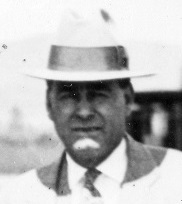
Jack Sullivan
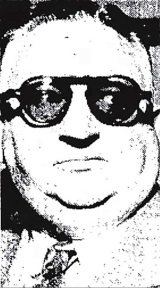
Bones Remmer
Elmer “Bones” F. Remmer (born 1898): Jokingly called “Bones” due to his ample size, Remmer grew up in the Bay Area of Northern California. He was mean and feared. Seemingly more entrepreneurial than Sullivan and Hall, Remmer would go on to co-own the Cal-Neva Lodge, run several casinos and clubs on San Francisco Bay’s east and west sides and become embroiled with both Jewish-American, Italian-American and other mobsters.
Jack Sullivan né John B. Scarlett (born 1879): A professional boxer in his youth, Sullivan “was a large man with a brusque manner and an intimidating personality,” wrote Dwayne Kling in The Rise of the Biggest Little City. He moved to Reno from Tonopah with friend Henry “Tex” Hall in the 1920s. He would help open and run the Willows then own a portion of and operate Bank Club, both popular Reno casinos.
Henry “Tex” Hall (born 1878): A cowboy from Texas, Hall worked as a manager at several Graham-McKay casinos, including the Cal-Neva Lodge, of which he came to own a piece.
The Reno Mob’s dominion began to ebb when crises arose during the 1930s — financial ruin for Wingfield and prison terms for McKay, Graham and Hall.
Photos of McKay, Graham and Sullivan: from the University of Nevada, Reno’s Special Collections
Photo of Wingfield: from the Nevada Historical Society

